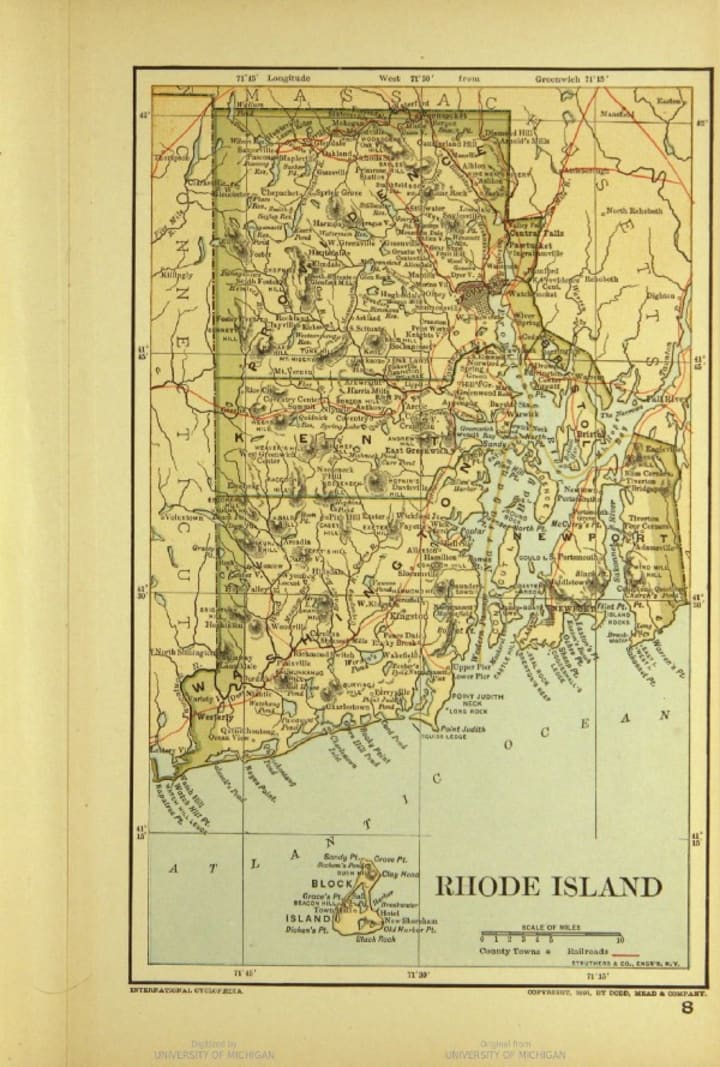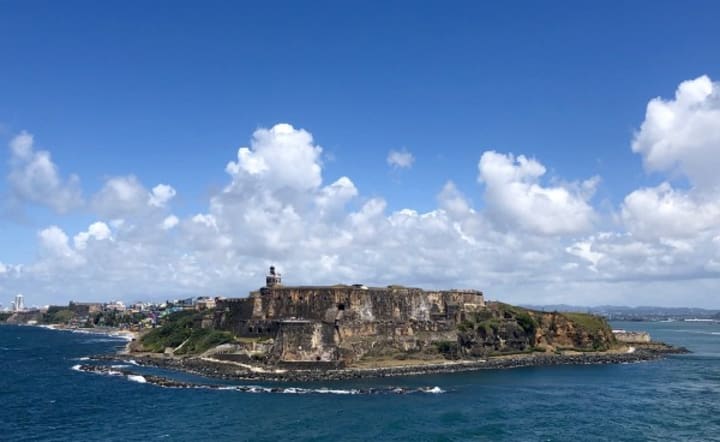
» KEY POINTS
- For years, there had been dire warnings that my State of Rhode Island was going to lose one of its two seats in the House of Representatives when the 2020 Census was completed.
- Yet, when the results from the 2020 Census were released, Rhode Island was not in so much danger of losing that seat.
- How did this come about? Are there ways that Rhode Island could have lost that seat, both in this universe and others? Did my own actions make a significant impact to save it?

Late in the afternoon on Monday April 26, 2021, the press release I had been dreading for nearly five years was made public. However, as I read it through, I realized something miraculous had happened; something I had worked feverishly (literally) to prevent from ever coming to fruition. With great joy I jumped up, ran down the hall to my partner’s office, and declared with all of the bravado I could muster:
I did it! I saved Rhode Island’s second seat in the House of Representatives!!! It was all worth it!!!!
As my partner came out from behind her desk to give me a congratulatory hug and kiss, a feeling of dread came over me. Was it real? How close to disaster were we? Are we safe from the inevitable lawsuits to come? I had to know...
» BEFORE THE EGGS HATCHED
The press release was from the United States Census Bureau, which revealed the results of the 2020 Census almost five months after the date decreed by law. Although Congress refused to act to change this statute, the delay was inevitable given the challenges during this Census cycle. By the Constitution, every 10 years (Article 1, Section 2, Clause 3) the United States must count “the whole number of persons in each State” (Amendment 14, Section 2) to be used for many purposes, but mostly for “apportionment”, or the act of determining how the 435 members of the House of Representatives are distributed among the States.

I live in Rhode Island, the last of the original 13 colonies to join the United States and the smallest by area to this day (excluding the Territories and the Federal District). Despite our small size, over a million people live here. Using 2018 population estimates, among the States Rhode Island was second only to New Jersey in terms of density—the number of people per square mile. By comparison, Montana had a similar population but at 147,040 square miles in contrast to Rhode Island’s 1,545, it yielded a density of 7 people per square mile compared to 684.
Over the prior 10 years, we had great reason to be concerned. While other parts of the country—especially in the South and West—were growing at a rapid clip, we appeared to be treading water with our population, and even shrinking on occasion. The signs were very clear: if our population did not rebound or we did not count more people than expected, then we were going to lose one of our two seats in the House of Representatives. With already so little influence at the Federal level, a loss like this would be devastating for the State and would preclude us from a vast array of programs and direction. I saw the potential implosion of my already precariously poised adopted home and realized I needed to do something about it.
It was one of factors that motivated me in December 2019 to apply for the position of Enumerator, one of the people who goes door-to-door to find everyone who did not self-report to the decennial Census. There were other reasons as well, not the least of which is that I had been working remotely and by myself for years and the idea of getting in some nice walks from April through June and interacting with others had a lot of appeal. Over the next several months I was interviewed, conditionally hired, finger-printed, and background checked, all in preparation for beginning training on April 1, 2020 for field operations expected to start late in that month.
And then... well... the COVID-19 pandemic started. Everything was pushed off and communication basically ceased. It was not until late July when someone finally followed up with me and we had a version of hybrid training scheduled. The process was a mess for everyone, the equipment and software difficult, the administration of President Trump unamiable (to say the least), and the timelines and expectations all over the place. It did not help having sweltering weather as I beat the pavement through the hottest Summer months. Thankfully, I did not have to deal with the natural disasters and wildfires of elsewhere. What I did not receive from the federal government, I found in a support group on Reddit of fellow Census peons like me. There were good days and horrible ones, and I still wonder how I pushed myself to hold on until the bitter end. I was finally let go in late October when the Supreme Court allowed the Census Bureau to wrap up operations.
That close-out was bittersweet. Yes, I was delighted to be done, but my own experience made me question the validity of the data. For instance, I would get the same address 4 or 5 different ways (16 Place Way; 16 Place Way Unit 16; 16 Place Way Apt 16; 16 Place Way #16; etcetera). At the same time, the Bureau would not support us in trying to just get head counts from multi-unit managers and I was often met with severe resistance. One time late into enumerating I was the first person sent to a housing complex that was majority Latinx and people of color. Although I was shocked to discover no one else had been assigned there yet, I was able to make great headway. Despite this, the system did not send me back there again for weeks, and I feared for these traditionally undercounted communities.

And here were all my concerns laid bare. If we were so close to the bleeding edge of losing our seat in Congress and I was personally having difficulty getting some of the most undercounted people and areas in the State, was there any hope? These were but a handful of the issues I encountered and there could be a book unto itself on that subject. I’ll spare you the details and recommend a read through that sub-Reddit for many tales by myself and others. Suffice to say, things were looking bleak. As the Trump administration continued to attempt to manipulate the data—even after unequivocally losing the Presidential election—I speculated if these results would have to be thrown out. With the Census Bureau continuing to be opaque about when results would be released and States beginning to sue to get them, I wondered if I was going to be back out on that sizzling sidewalk again.
Yet all that fear washed away when I read these words in the aforementioned press release:
...[S]even states will lose one seat each (California, Illinois, Michigan, New York, Ohio, Pennsylvania, and West Virginia), and the remaining states’ number of seats will not change based on the 2020 Census.
I read those words over and over again before I ran down the hall in jubilation. My eyes did not deceive me; Rhode Island was not on the list! I had succeeded!
» SURVIVAL OF THE SMALLEST
Of course, that is all hyperbole. I did not really do it single-handedly and I may not have had any material impact at all. Over the next day, I read quotes from local politicians patting themselves on the back for a job well done and congratulating themselves for all they did. All I can speak to is my experience where they did nothing for me on a day-to-day basis. On the contrary, I sometimes ran into resistance because their programs were not coordinated with the Census Bureau and resulted in mixed messaging and many people complaining of excessive visits (though to be fair, the latter was also caused by the Census Bureau’s scheduling system itself).
Thus, after letting my partner get back to work, I took a deep dive on how the seats were assigned. Again, I’ll spare you the math and computer programs to assign the order, but when looking at the official releases from the Census Bureau, it was seemingly not that close:

At 8th-to-last, it does not look like Rhode Island was in any danger at all. However, that is only part of the story. Keeping all other States constant, I figured out to the person how close we actually were. The answer:
19,127
Only 19,127 people separated Rhode Island from losing its second seat in the House of Representatives. Using the 2020 Census figures, this represents just 1.7% of the State population and 0.006% of the entire population of the United States. In this situation, New York would actually regain the seat it lost in this Census. What is interesting is that Rhode Island’s final population figures were 3.6% over 2019’s estimates. The prior three years had us growing at an average of 0.1% per year, so things seemed off.

My first concern was that Secretary of Commerce Gina Raimondo (who oversees the Census Bureau) had pulled some shenanigans. After all, she was the governor of Rhode Island until just a month before these figures were released. But when reviewing the country as a whole (1% growth from 2019 estimates) and individual States, it became clear that there were a few patterns that made all the difference, and it was not the higher-than-expected population in Rhode Island.
When I took the 2019 estimated population and ran it through the apportionment program, it came out exactly the same except Rhode Island and Minnesota each had one less seat and Ohio and Arizona had one more. And therein lies the rub. My brother, his wife, and his wife’s mother had all moved to Arizona over the years, along with a plethora of other people. We have been joking for years that they were going to steal our seat (and do nothing with it since they are rather apolitical compared to me). Arizona has been growing at an exceptional clip, but its numbers were the furthest off expectations of all States. As a matter of fact, the Bureau enumerated 1.7% less people than 2019 estimates, or over 127,000 people.
There are two possibilities here. First, the Bureau had been overestimating Arizona’s growth rate over the prior 10 years (averaging about 1.5% over the past 8–9 years). The other is that Arizona was the State that was truly hit with what I feared the most: an undercount. It is highly likely that Arizona was undercounted, and that was truly how Rhode Island survived this Census.
» FLEEING TO THE MAINLAND
Still, where did Rhode Island’s extra people come from? The answer is the same place that other States got their boosts from: Puerto Rico. Between the 2010 Census and the 2020 one, the United States territory lost nearly 12% of its population, or 440,000 people. The island was already losing population due to a string of natural and man-made disasters before Hurricane Maria hit in 2017, but afterwards nearly 4% of the population immediately left. As the Trump administration bungled the relief efforts, the drain continued. Being United States citizens, the people of Puerto Rico were free to go wherever they wanted in the rest of the country, and they did.

While some have returned, most have remained in other States and made new lives. Florida alone is estimated to have absorbed over 180,000 citizens and Texas over 60,000—these two States also happen to be the big winners in seat gains from this Census, too. Rhode Island appears to have received somewhere between 15,000 to 25,000. Perhaps the exact number is 19,127?
As such, we have an undercount in Arizona and a fleeing Puerto Rican population to thank for saving our Congressional seat. The pandemic has also brought a new set of immigrants to Rhode Island from New York, New Jersey, and Massachusetts. People fleeing congested cities for comparably cheaper housing and open space were not part of the Census count (only people here on April 1, 2020 counted), but will be critical to keeping this trend going in 2030 and beyond. Yet, we will have to support these people in the meanwhile and will need the resources this apportionment brings for the next ten years. In that way, the recent arrivals can thank the people from Puerto Rico for much of what the State will be able to do over the next ten years.
» MULTIVERSE OF MADNESS
That does beg the question of what would happen if Puerto Rico were a State? Using the 2020 Census numbers, Puerto Rico would gain 4 seats in the House of Representatives. Despite this, Rhode Island would still hold on to its second seat! California, Colorado, Minnesota, and Montana would all donate a single seat each to Puerto Rico while Rhode Island would drop from eighth to fourth-from-the-bottom on the priority list. It is much closer the edge, but still safe with the current population numbers.
The hubbub right now is on Washington, D.C. becoming a State after the House of Representatives passed legislation to make it so. While this bill stands no chance to make it through the current Senate, it does bring up an interesting “what if” scenario. Still, with a population of around 690,000 people, the District of Columbia would be the third smallest State by population after Wyoming and Vermont (although it would steal the title of smallest State by area from Rhode Island, and would be the densest). Because of this, they would just gain one seat at the expense of Minnesota, who would drop to 7 representatives. And this, of course, would only knock Rhode Island down one spot in the priority order.

There seems little concern that Rhode Island was in that much danger of losing a seat in the House of Representatives this cycle. Years of hand wringing on my part may have been unnecessary, but that is just the way I am. And to assuage any last doubt I had, I looked through the population percentage gains between the 2010 Census and the 2020 one. While the United States as a whole (including the Territories) increased 7.1%, the Northeast Region was just 4.1%. With Rhode Island itself coming in at 4.3%, it seems right in line with the rest of the area. Even if the growth rate were just 4.1%, that would only be a difference of 1,657 people; hardly enough to make an impact. Actually, the growth rate would have needed to be less than 2.5% to cause the loss of a seat.
With all of this data and analysis, it seems that—at least as of April 26, 2021—Rhode Island was safe for the next ten years, and perhaps even longer. As such, it was time to bask in my victory.
Yes, I certainly did it!

The above piece is an excerpt from Always Divided, Never United: And Other Stories During a Time of Pandemics and Politics by J.P. Prag, available at booksellers worldwide.

Learn more about author J.P. Prag at www.jpprag.com.

An earlier version of this article appeared on Medium.
About the Creator
J.P. Prag
J.P. Prag is the author of "Aestas ¤ The Yellow Balloon", "Compendium of Humanity's End", "254 Days to Impeachment", "Always Divided, Never United", "New & Improved: The United States of America", and more! Learn more at www.jpprag.com.






Comments
There are no comments for this story
Be the first to respond and start the conversation.